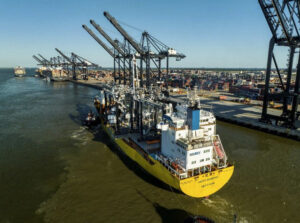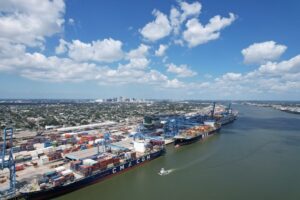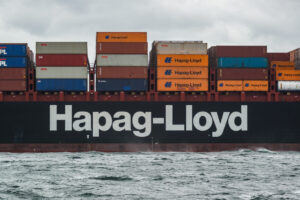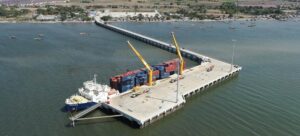Drewry Maritime Equity Research has recently released a paper stating that a merger between Hyundai Merchant Marine (HMM) and fellow South Korean carrier Hanjin Shipping was a distinct possibility, as by joining together the liners could ensure survival.
Drewry Maritime Equity Research’s research paper entitled Hyundai Merchant Marine – How will the Endgame play out?, published on February 25, 2016, outlined the embattled carrier’s predicament and various attempts to stay afloat, concluding that the company will likely survive but that a merger with compatriot Hanjin Shipping is a very real possibility.
HMM is on course to report five consecutive years of operating losses when it releases its full-year 2015 financial results.
The accumulated losses in its container division alone since 2008 to nine months of 2015 amount to US$352 million.
As the company sells off other non-core assets, the container division is growing in importance; container sales now account for approximately three-quarters of HMM revenue, up from two-thirds in 2008.
Drewry believe that the increasing reliance on the container sector puts HMM in a tough spot as the near-term outlook for the industry is negative and expects the industry to lose in the region of $5 billion in 2016 – meaning that the company will have to consider all options, including a merger with Hanjin.
HMM has thus far raised around $3 billion in new capital and is looking to reduce its financial costs by renegotiating its debt and asking vessel charter parties to reduce their daily fees, many of which were agreed when shipping was booming.
It is thought that creditors have tasked HMM with securing 20-30% cuts in charter costs as a condition for further assistance.
Despite of all of its efforts, HMM remains in a liquidity crisis that threatens its ability to meet its operational and debt commitments.
The company has loans of $334 million maturing in 2016 and $530 million in 2017 and investors and creditors are turning sceptical about its ability to pay them back.
Previous merger talks between HMM and Hanjin were put to rest by the Korean government last year, but the debt situation in both companies is causing serious concern in local circles and could well bring them back to the table.
A merger would propel both carriers from being on the peripheries of the Top 20 to the become the fourth largest operator in the world (before the merger of Cosco and CSCL into China Lines) with combined worldwide volumes of eight million TEU from a fleet capacity of just over one million TEU, giving a market share of 5% based on the current fleet.
The far larger orderbooks of the carriers above them would see HMM/Hanjin lose some ground, but a financially stronger company might have a better chance of convincing lenders to fund a new order spree, something that HMM will struggle to do on its own.
The pairing would have a much stronger position in the key East-West trades as well as the Intra-Asia market.
Based on the ships deployed in February 2016 HMM/Hanjin would have an 11% share of the Transpacific and 8% of Asia-Europe. Such a combination could also help drive Busan, Korea’s main port, to grow quicker, which might appeal to local interests.
The Drewry View: For all of its efforts HMM remains in trouble. A merger with Hanjin would create a stronger entity and increases their chances of surviving in a very tough market.








